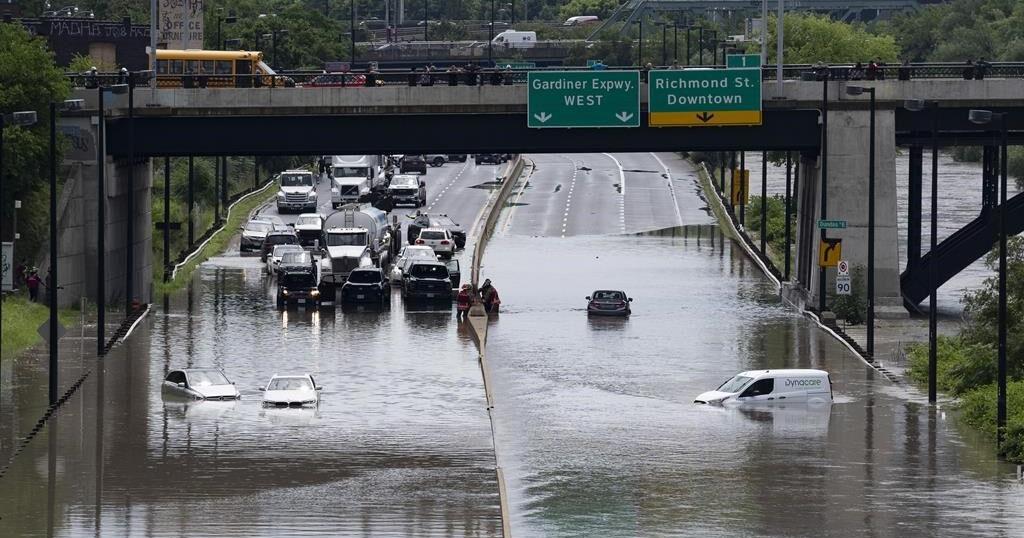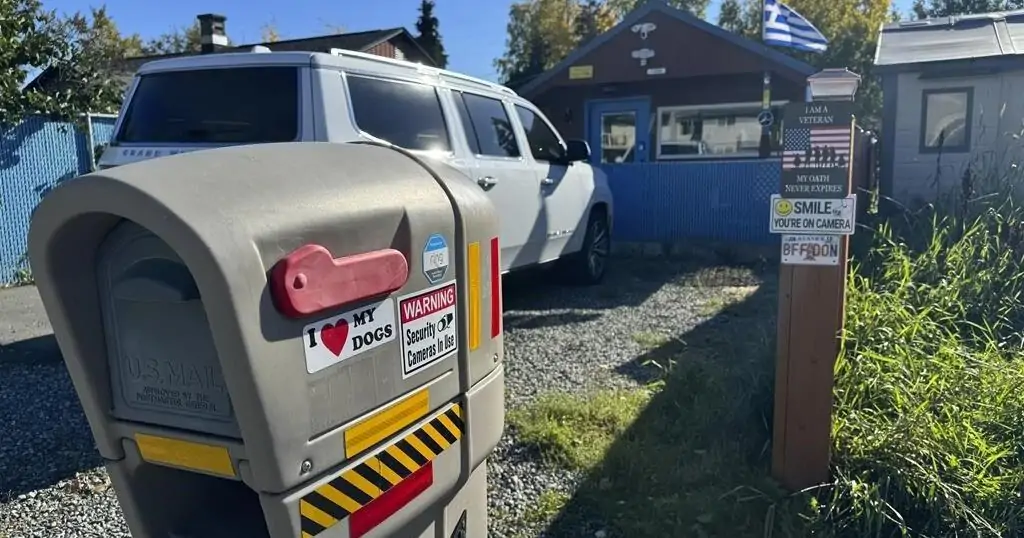Toronto city councillors, who presided last week over a city of inundated transit stations, roadways and basements, are set to discuss how to make the metropolis more resilient to climate-fuelled floods.
Mayor Olivia Chow’s motion, to be tabled at Wednesday’s city council meeting, is expected to stir discussion on flood mitigation efforts. The motion, recognizing how climate change has made flood-inducing storms more intense and frequent, asks city staff to look at what discontinued programs could be resuscitated, which ones are already working, and what more can be done.
Experts say Toronto, and most other major cities in Canada, face a tall task.
Across Canada, a once-in-every-50-years rainstorm could come around every 10 years by late century if planet-warming fossil fuels continue to be burned at high levels, according to a 2019 federal assessment.
In Toronto, extreme rainstorms could carry 30 per cent more rainfall by 2080, a recent city report indicated.
“We have a lot of catching up to do if we’re going to make the way we live in these urban areas resilient to climate change,” said Jason Thistlethwaite, an assistant professor at the University of Waterloo who studies climate risk management.
Nearly 100 millimetres of rain fell on parts of Toronto over a few hours last Tuesday and exposed cracks in the city’s flood preparedness. Cars were stranded for hours on the Don Valley Parkway, commuters waded through inundated transit stations, and residents pumped out flooded basements.
Yet, major projects and programs are already underway that could cut that risk and experts say there are plenty of ways the city can be made more resilient.
Ahead of Wednesday’s meeting, here are some of the solutions experts in flood and climate risk management said Toronto could consider.
Flood maps
Residents across Toronto can easily find out whether they are in a river-prone flood – also called a fluvial flood – area.
But the city does not publish maps detailing whether a home is at risk of stormwater floods, the type of flooding that causes the sewer system to back up into streets and basements, said Dan Sandink, director of research at the Toronto-based Institute for Catastrophic Loss Reduction.
Sandink said those maps are “absolutely necessary,” and should be readily available.
“We know the regions of the city that are vulnerable from flooding, there’s no technical reason why we can’t identify these regions,” he said.
With those maps, prospective homebuyers could make informed choices about their purchase, Sandink said. And as a housing crisis spurs the conversion of basements into rental units, underinsured renters could seek out coverage or better engage with landlords about what steps have been taken to mitigate flood risks.
Thistlethwaite says it could also motivate residents – once they realize the extent of their flood risk – to push for action from city hall.
“If we want Toronto politics to work better, you have to give people the right information, and we’re not even starting off on the right foot in that direction,” he said.
So, why hasn’t the city already released those maps? Sandink says it comes down to concern over what it might do to property values.
“This is something that should be done, for sure, but it’s politically difficult,” he said.
Stormwater charge
One of the biggest hurdles to a flood-resilient city is financing for those solutions, said Thistlethwaite. That’s where a stormwater charge could come in, he said.
The water bill charge, already applied in Mississauga and set to be rolled out in Hamilton, would provide a dedicated funding stream for stormwater repairs. In principle, properties with more hard surfaces such as impermeable driveways would pay more because those surfaces contribute more runoff to the system.
“A separate line item in the budget gives a stormwater management team a lot more ability to plan for the future, and, you know, maybe afford things like flood barriers for Union Station,” said Thistlethwaite.
It could also create an incentive for property owners to install more absorbent surfaces, said Andrew Binns, University of Guelph associate professor and stormwater management expert.
“I think it makes sense that people would see a benefit if they could help lessen the community’s chance of being flooded,” he said. “That’s a big accomplishment and that type of incentive would help along the way.”
The proposal has been met by critics who decry it is a “rain tax.” Donald Trump Jr., the former United States president’s eldest son, even joined in, posting critical comments on social media in response to reports Toronto was considering the charge.
In April, Chow paused public consultations on a stormwater charge, in part over concerns it overlapped with a new parking lot tax proposal.
The motion set to be discussed on Wednesday directs staff to consider, during consultations on the parking lot tax, opportunities to mitigate stormwater runoff from large-scale industrial, commercial and institutional property paved surfaces.
Elevate electrical transformers
More than 167,000 Toronto Hydro customers were reported to be without power at the height of last week’s storm after a Hydro One transmission station was flooded.
Thistlethwaite called it “inexcusable” and “ridiculous” that a city would lose power due to a flood.
“That’s a cascading failure that shouldn’t happen’ he said.
“We know how to raise transformers off the ground. Moving Union Station isn’t easy. Moving the (Don Valley Parkway) isn’t easy. Moving a transformer off the ground is cheap.”
Disconnect downspouts
There are plenty of steps residents can take at home to help mitigate flood risks, such as greening yards and directing water away from the building. One of the most straightforward – and a mandatory step for homeowners in Toronto – is to disconnect the downspout from the city’s sewer system.
“This is often a major driver of limited capacity in municipal systems, is homeowner contribution of excess water,” said Sandink.
The downspout could instead be directed to a bin that collects rainwater.
The mayor’s motion notes the city previously offered low-cost rain barrels as part of its downspout disconnection program, but that was discontinued over a decade ago.
Build on what’s working
Several experts spoke highly of some of the city’s infrastructure and stormwater management plans.
Toronto is in the midst of building what it calls the largest stormwater management program in the city’s history.
The more than $3-billion effort will, the city says, virtually eliminate combined sewer overflow – when both stormwater and wastewater combine to overload the system – from the waterways and help reduce flood risks.
At the heart of that effort, and buried 50 metres underground, is a 22-kilometre tunnel system set to store stormwater during heavy rainfall and then, once rains subside and system can withstand it, send it to a new pumping station at Ashbridges Bay, set to be complete by 2034.
The first of three tunnels’ section, a 10.5-kilometre stretch from the north end of Coxwell Avenue winding parallel to the Don River, is set to be complete this year.
“That’ll be a game changer,” Thistlethwaite said of the Coxwell Bypass.
Sandink – who praised the city’s water division as a national and even international leader – said Toronto should continue investing in its basement flood protection program.
The program carries out detailed assessments across the city and makes recommendations on where to improve the system, such as with upsized sewers and underground storage tanks.
“They should continue that work and make sure that it is completed, and that the recommendations are implemented,” Sandink said.
The program also offers subsidies up to $3,400 for homeowners to install flood protection devices, such as a sump pump.
“Our understanding is that very few homeowners take advantage of that program. So, we need to empower homeowners to understand their flood vulnerability, and to take advantage of the programs that are existing currently,” Sandink said.
This report by The Canadian Press was first published July 23, 2024.





















